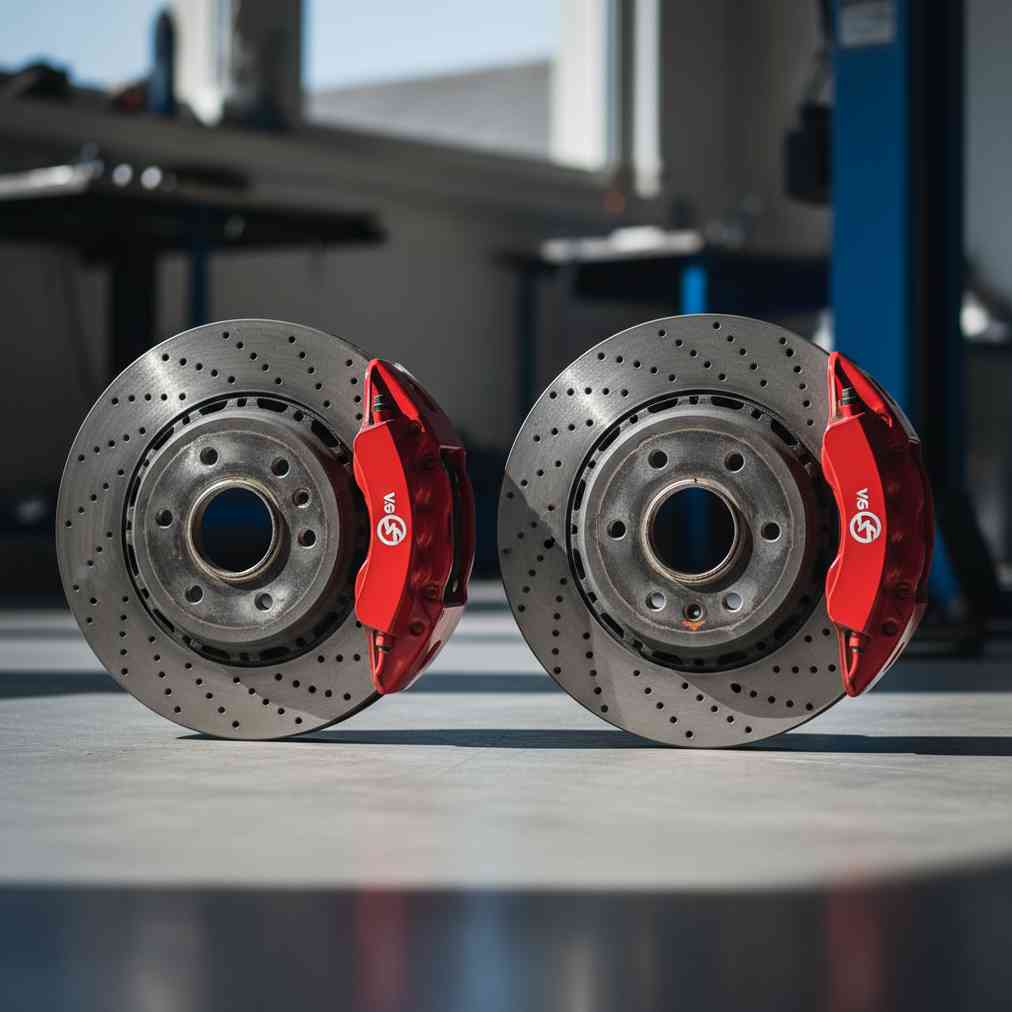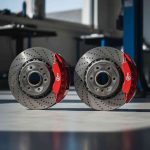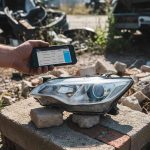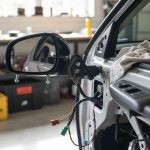Understanding Platform Sharing in the Automotive Industry
The modern automotive industry’s practice of platform sharing has created unprecedented opportunities for savvy car enthusiasts and mechanics to find high-end performance parts on seemingly ordinary vehicles. This comprehensive guide will show you how to leverage this industry practice to discover “hidden gem” parts that can save you hundreds or even thousands of dollars on your next automotive project.
Platform sharing is a core strategy where different models and even different brands under the same corporate umbrella share the same basic structure, engineering, and major parts. This means that engines, gearboxes, braking systems, and suspension parts can be identical across seemingly distinct models, creating opportunities to source expensive luxury car parts from more common, affordable donor vehicles.
What Makes a Part a “Hidden Gem”
A hidden gem part is essentially a high-performance or luxury component that’s shared between an expensive vehicle and a more common, less expensive model. The key advantage comes from finding these shared parts at salvage yards near me or through used parts catalogs for the common car, resulting in significant savings compared to sourcing the same part from the luxury vehicle.
- Cost Reduction: Save 50-80% compared to buying from luxury vehicle sources
- OEM Quality: Identical parts with same specifications and performance
- Availability: Common donor vehicles are more frequently found in salvage yards
- Lower Demand: Less competition when sourcing from economy models
Major Platform Sharing Examples
Volkswagen-Audi Group (VAG) Platform Strategy
The VAG group represents one of the most extensive platform sharing networks in the automotive industry, offering numerous opportunities for hidden gem discoveries:
| Platform | Luxury Vehicle | Common Donor Vehicle | Shared Parts |
|---|---|---|---|
| MQB Platform | Audi A3/S3 | VW Golf/GTI | Engines, transmissions, brakes |
| MLB Platform | Audi Q7 | VW Touareg | Suspension, drivetrain, electronics |
| MLB Platform | Porsche Cayenne | VW Touareg | Platform structure, major mechanicals |
Other Notable Platform Sharing Examples
- Mercedes GLA and Infiniti Q30: Share platform, engine, gearbox, and crash structure
- Toyota GT86 and Subaru BRZ: Nearly identical vehicles with different badges
- Ford Focus and Volvo V50: Share numerous mechanical parts and systems
- Chrysler 300 and Mercedes E-Class (older generations): Platform and drivetrain sharing
Cross-Referencing Parts: Tools and Techniques
Successfully finding hidden gem parts requires mastering the art of cross-referencing. This involves understanding how to identify shared parts between different vehicles and where to find reliable information about part compatibility data across multiple platforms.
Using Online Parts Catalogs
RockAuto is one of the most valuable resources for cross-referencing parts between different vehicles. This major online auto parts retailer operates as a warehouse/dropshipper, often offering lower prices than traditional brick-and-mortar stores.
- Start with the luxury vehicle: Search for your desired part using the expensive model
- Note the OEM part number: Record the manufacturer’s original part number
- Cross-reference the part number: Search for the same OEM number across different makes and models
- Verify fitment: Double-check compatibility, considering sub-models and production dates
Advanced Research Techniques
Modern automotive research benefits from advanced data analysis techniques that help identify part sharing patterns across different vehicle lineups. Professional mechanics and serious enthusiasts often maintain databases of interchangeable parts to streamline their sourcing process.
- VIN Decoder Analysis: Use VIN information to identify exact specifications
- Factory Service Manuals: Reference original equipment specifications
- Online Forums and Communities: Leverage collective knowledge from enthusiast groups
- Part Number Cross-Reference Databases: Utilize professional-grade lookup tools
Strategic Salvage Yard Shopping
Success in finding hidden gem parts requires a strategic approach to visiting salvage yards. The goal is to target vehicles that share platforms with expensive models but are less sought after in the salvage market.
Identifying Target Vehicles
When visiting a local salvage yard, focus on common vehicles that share platforms with luxury or performance models. These donor vehicles typically have lower demand, making parts more available and affordable.
| Target Part | Look in This Common Vehicle | Instead of This Expensive Vehicle | Potential Savings |
|---|---|---|---|
| Performance Brakes | VW GTI | Audi S3 | 60-70% |
| Turbo Engine | Ford Focus ST | Ford Mustang EcoBoost | 40-50% |
| AWD System | VW Touareg | Porsche Cayenne | 70-80% |
Timing Your Visits
Successful salvage yard shopping requires understanding inventory cycles and timing your visits strategically. The best days to visit salvage yards can significantly impact your chances of finding quality parts.
- New Inventory Days: Visit shortly after fresh cars arrive
- Weekday Visits: Less competition from weekend DIY enthusiasts
- Seasonal Considerations: Target specific parts based on seasonal demand
- Holiday Periods: Take advantage of special sales and promotions
Performance Parts: The Brembo Example
High-performance brake systems represent one of the most valuable categories of hidden gem parts. Brembo brake systems, known for their exceptional performance and premium pricing, are often shared between luxury and performance models and their more common platform siblings.
For example, if an Audi S-model uses a specific Brembo brake system, that same system might be found on a higher-spec Volkswagen model built on the same platform. Finding performance brakes on a budget becomes possible when you know where to look for these shared parts.
- Brake Calipers: Often identical across platform siblings
- Brake Rotors: Same specifications and mounting points
- Brake Pads: Identical compounds and dimensions
- Brake Lines: Compatible routing and connections
Engine and Drivetrain Hidden Gems
Powertrains represent some of the most expensive automotive parts, making them prime candidates for hidden gem discoveries. The automotive industry’s trend toward standardization through data-driven design has led to increased sharing of engines and transmissions across brand lines.
Engine Sharing Examples
| Engine Type | Premium Application | Common Application | Availability |
|---|---|---|---|
| 2.0T FSI | Audi A4 | VW Passat | High |
| 3.6L VR6 | Porsche Cayenne | VW Touareg | Moderate |
| 2.3L EcoBoost | Ford Mustang | Ford Focus RS | Low |
Transmission Treasures
Automatic and manual transmissions are frequently shared across platforms, creating opportunities to source expensive transmissions from more common vehicles. Finding quality used transmissions becomes much more affordable when you know about these shared applications.
Electronic Systems and Modules
Modern vehicles rely heavily on electronic control modules, and these sophisticated parts are often shared across platform families. Understanding electronic system data structures can help identify compatible modules between different vehicles.
- Engine Control Modules (ECM): Often identical with different software
- Body Control Modules: Shared across similar body styles
- Climate Control Systems: HVAC modules frequently interchangeable
- Infotainment Systems: Head units and displays often platform-specific
Quality Assessment and Inspection
Finding hidden gem parts is only half the battle; ensuring their quality and functionality is equally important. Developing a systematic approach to inspecting used parts will help you avoid costly mistakes and ensure successful installations.
Visual Inspection Checklist
- Physical Damage: Look for cracks, corrosion, or obvious wear
- Mounting Points: Verify all attachment points are intact
- Electrical Connections: Check for damaged pins or corroded connectors
- Fluid Contamination: Assess any fluid stains or leaks
- Part Numbers: Verify correct part numbers and revision codes
Functional Testing
When possible, perform basic functional tests on electronic parts before purchase. Many salvage yards allow customers to test parts using portable testing equipment.
Pricing Strategies and Negotiation
Understanding salvage yard pricing structures can help you negotiate better deals on hidden gem parts. Yards often price parts based on the donor vehicle rather than the expensive application, creating opportunities for significant savings.
| Negotiation Factor | Advantage | Typical Savings |
|---|---|---|
| Multiple Parts Purchase | Volume discount | 10-20% |
| Cash Payment | No processing fees | 5-10% |
| End of Day Visit | Quick sale preference | 15-25% |
| Repeat Customer | Relationship building | 10-15% |
Legal and Warranty Considerations
When sourcing parts from salvage yards, it’s important to understand your rights and any warranty coverage that may apply. Most reputable yards offer limited warranties on major parts, but terms vary significantly between locations.
- Return Policies: Understand time limits and condition requirements
- Core Charges: Know which parts require core returns for full refunds
- Installation Requirements: Some warranties require professional installation
- Documentation: Keep receipts and part numbers for warranty claims
Building Your Hidden Gem Database
Successful hidden gem hunting requires building and maintaining your own database of interchangeable parts. Combining data from multiple sources creates a comprehensive reference that can save time and money on future projects.
Essential Information to Track
- Part Numbers: OEM numbers and cross-references
- Vehicle Applications: All compatible makes and models
- Yard Locations: Where you’ve seen specific parts available
- Pricing History: Track price trends over time
- Installation Notes: Document any fitment considerations
Future Trends in Platform Sharing
The automotive industry continues to evolve toward greater standardization and platform sharing. Current trends in automotive technology suggest that platform sharing will only increase, creating even more opportunities for hidden gem discoveries.
Major automakers are working to reduce their platforms by up to two-thirds while simultaneously reducing engine and gearbox variants by approximately 90%. This standardization trend means that future vehicles will share even more parts across brand lines, making hidden gem hunting an increasingly valuable skill.
Getting Started: Your First Hidden Gem Hunt
Ready to start your own hidden gem hunting adventure? Begin with a specific project in mind and research the platform sharing opportunities for your target vehicle. Whether you’re looking for performance upgrades or replacement parts, understanding these shared applications can lead to substantial savings.
If you have a vehicle that’s reached the end of its useful life, consider getting an instant quote for your junk car to fund your next project. The money from selling your old vehicle can provide the budget for sourcing quality used parts for your next automotive adventure.
- Start Small: Begin with less expensive parts to build experience
- Network with Enthusiasts: Join forums and local car groups for insider knowledge
- Document Everything: Build your own cross-reference database
- Be Patient: The best hidden gems require time and persistence to find
- Stay Safe: Always prioritize safety when removing parts from vehicles
The world of hidden gem auto parts offers endless possibilities for the informed enthusiast. By understanding platform sharing, mastering cross-referencing techniques, and developing relationships with local salvage yards, you can unlock substantial savings while building or maintaining your dream vehicle. Start your hidden gem hunting journey today and discover the treasures waiting in seemingly ordinary cars.





Leave a Reply
You must be logged in to post a comment.